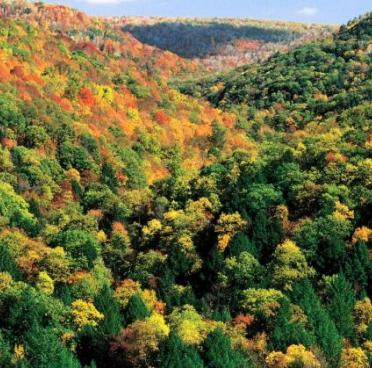Key point
-
U.S. hardwood producers comply with all applicable legal and regulatory requirements governing timber management, and the sale and export of lumber and wood products.
Key facts
-
U.S. hardwood exporters contract only with known and reliable suppliers that adhere to all laws and regulations or they cease doing business with them.
-
U.S. hardwood producers cooperate and work with all customers and importers of record to provide evidence of legal compliance.
-
The U.S. Lacey Act, as amended, prohibits any commercial transactions of wood material obtained in violation of any foreign, U.S., or state law. There have been no US Lacey Act violations involving US temperate hardwood species.
-
Information about federal, state, and local laws and regulations is readily available from government, association, and other websites.
Detail
Seneca Creek 2017 Assessment, Section 5: Given the nature of the businesses involved in export, the volume of potentially stolen US hardwood that enters the export market is likely negligible.
Seneca Creek 2017 Assessment, Section 7: In the United States, federal environmental legislation contributes to sustainable forestry practices throughout the hardwood region.
Seneca Creek 2017 Assessment, Section 10.4: Timber transactions are conducted between willing buyers and willing sellers. Hardwood managers and sawmill procurement organizations almost universally have standard supply agreements, contracts, timber deeds and other legal and enforceable business relationship agreements. Those contracts address utilization specifications, quality and quantity of trees, compliance with applicable environmental, health and safety laws and required insurance coverage.
Seneca Creek 2017 Assessment Finding 2: Based on an examination of pertinent data, we conclude that all states in the U.S. hardwood-producing region can be considered Low Risk of sourcing illegal hardwoods per the requirements of the EU Timber Regulation, the Australia Illegal Logging Prohibition, Japan’s Goho program, and the due diligence and risk assessment requirements of the certification programs (FSC®/SFI®/PEFC®) operating in the United States.
Seneca Creek 2017 Assessment Finding 7: Illegal logging in the U.S. context most commonly involves timber theft and/or trespass on private and public lands. While timber theft is a pernicious crime that can cause serious economic harm to an affected landowner, the amount of stolen timber across the hardwood region is very low relative to total hardwood production. The few academic studies and systematic surveys published since 2008 continue to suggest that stolen wood very likely represents a negligible volume in the mix of hardwood products exported, almost certainly less than one percent. [Section 5]
Seneca Creek 2017 Assessment Finding 8: Since 2008, several states have further strengthened enforcement capability and/or increased penalties for crimes involving timber theft. [Section 5]
Seneca Creek 2017 Assessment Finding 9: Since 2008, the amended U.S. Lacey Act has strengthened U.S. law and regulation with respect to illegal sourcing of wood materials. [Section 2]
Seneca Creek 2017 Assessment Finding 10: The data indicate that federal, state, and local laws governing various aspects of forest management are effective and enforced. [Sections 6, 7, 11; Appendix D]
Seneca Creek 2017 Assessment Finding 11: The international engagement by the United States, and its strong domestic legal framework for enforcing and prosecuting against illegally traded wood products (made stronger since 2008), further mitigates the risk of U.S. hardwood products originating from illegal sources. [Section 2]
Seneca Creek 2017 Assessment Finding 12: The sourcing of U.S. hardwoods is almost entirely from privately-owned forestland. Private lands account for approximately 92 percent of U.S. hardwood production. Of the land in private ownership in the hardwood region, 65 percent is owned and managed by approximately 9.4 million family forest owners (nearly 11 million for the U.S. as a whole). The average holding is just over 9 hectares. [Section 3]
Seneca Creek 2017 Assessment Finding 13: The rights of timber ownership are well-established and protected in the United States. Landowners can make independent decisions about how their land is managed and used. Most U.S. forest landowners own and manage their forestland for reasons other than timber production. [Section 3]
Seneca Creek 2017 Assessment Finding 24: The FSC U.S. national risk assessment process has affirmatively determined Low Risk of illegally harvested wood, wood harvested in violation of traditional and human rights, and wood from forests in which genetically modified trees are planted. [Section 11]
